Affiliate links on Android Authority may earn us a commission. Learn more.
Three smartphone camera trends to watch for in the future
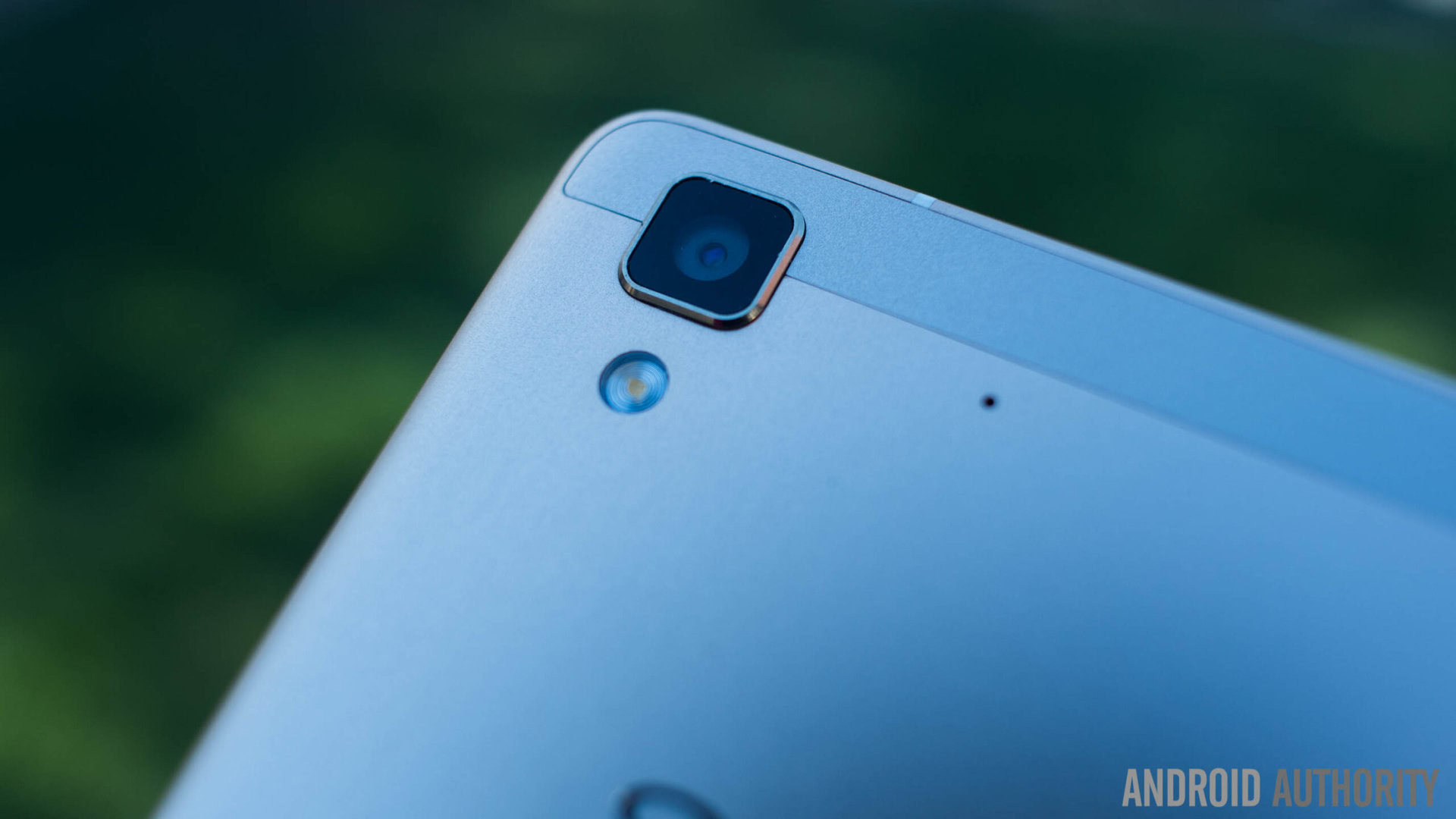
Smartphone camera technology has grown in leaps and bounds in the past couple of years and continues to be a major selling point in the flagship segment of the market. The industry certainly isn’t done pushing the boundaries yet, so here’s a short list of upcoming smartphone camera technologies to keep tabs on.
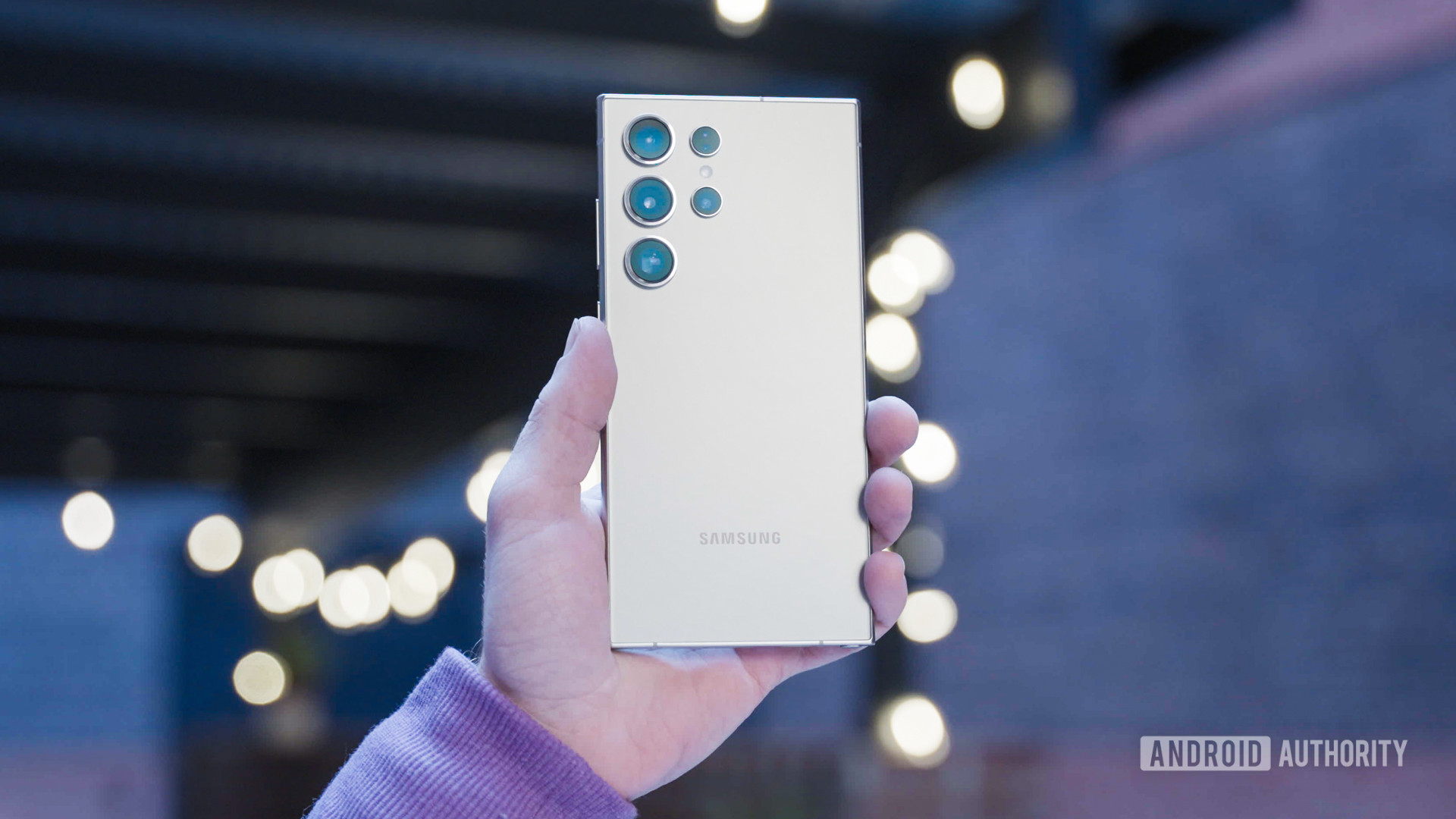
Superior optical image stabilization
OPPO and MEMS Drive Inc. have been demonstrating their new SmartSensor image stabilization technology since MWC 2016. SmartSensor is a MEMS (micro-electro-mechanical system) based image stabilizer for smartphones, which also claims to be the industry’s first sub-pixel-level optical image stabilizer.
SmartSensor was produced as a result of close R&D collaboration between the two companies and promises to improve smartphone camera performance and image quality. Optical image stabilization technologies inside smartphones commonly shift the lens to cut down on motion shaking using Voice Coil Motor (VCM) actuators. This MEMS alternative actually moves the image sensor, more like professional DSLR cameras, allowing for stabilization to extend from two to three axes as well. The video below shows how the technology allows for free movement of a sensor.
The MEMS-based approach offers a number of advantages over VCM. Three axis stabilization allows for motion compensation of pitch, yaw, and roll. It is also considerably faster and more accurate than other smartphone OIS technologies, compensating for vibrations in 15 ms compared to 50 ms for lens-based technologies. Power consumption is also much lower, coming in at around just as 10mW, which is approximately 50 times lower than lens-based OIS.

Oppo’s SmartSensor technology claims to offer an accuracy of 0.3µm when correcting vibrations, while a typical lens-based OIS system manages 3µm-5µm. Given that your typical smartphone image sensor pixels are between 1µm and 2µm in size, this offers sub-pixel levels of accuracy which will greatly reduce any notable effects of motion in an image or video.
OPPO’s approach can apparently correct for up to 1.5 degrees of motion, which might not be as good as top-notch cameras but is certainly a step up for smartphones. The technology can be implemented in sensor sizes ranging from 1/1.8″ for high-end models to 1/3″ for mid-range handsets.
Dual camera “optical” zoom
A number of smartphones have implemented dual camera setups in recent years, allowing for refocusing of images post capture, 3D capture, and automatic switching between lens types, such as the wide-angle option with the LG G5. As useful as these features can be, they haven’t really pushed up the quality of smartphone photography. However, Corephotonics’ dual camera optical zoom technology could be the step up that some have been looking for.
Corephotonics has been developing its dual camera zoom technology for a couple of years and has recently been demonstrating its latest iteration. This design features two 13 megapixel sensors, one regular sensor and the other based on a propriety design that “folds light”, resulting in a 5x “optical” zoom.
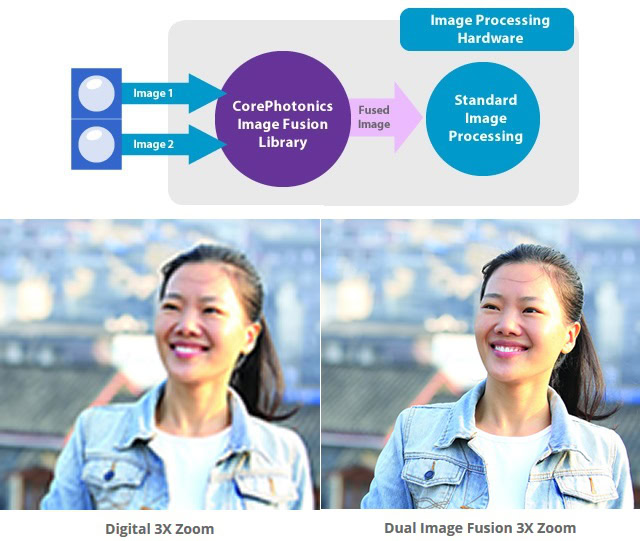
I say “optical” because the company’s technology doesn’t actually rely on lenses or traditional mechanical optical zoom techniques. Instead, the technology is based on software algorithms that piece a zoomed in picture together. The company also has a 3x optical zoom model that uses a 13MP and 8MP sensor combination, one with a wide angled lens and another telephoto lens.
While we know that traditional digital zooms offer nothing more than a more pixelated image to look at, Corephotonics’ technology actually manages to retain image quality while zooming in. See the picture below.
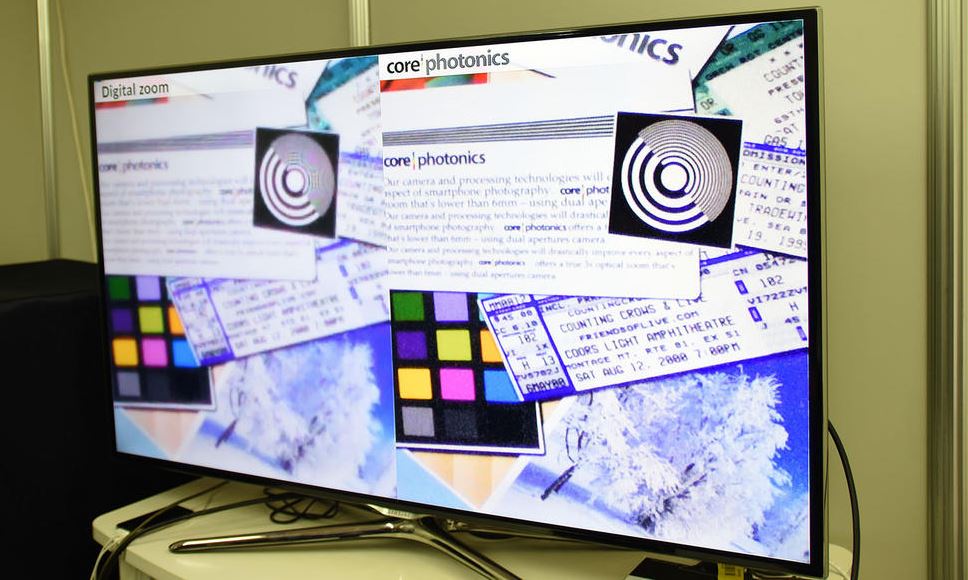
Furthermore, the digital algorithms and dual image sensors can also be used to improve low light performance and remove noise. The latest demonstration also showcases a software based form of optical image stabilization that appears to work very well.
Corephotonics’ cameras already work with some of Qualcomm’s Snapdragon processors and the company is also working to bring the tech to Samsung’s Exynos and MediaTek’s platforms.

Forget megapixels, lenses are in
Samsung has opted for a 12 megapixel image sensor in the Galaxy S7, dropping down from 16 megapixels in the Galaxy S6, and some of the best cameras in the industry, such as the Nexus 6P, are also making use of smaller megapixel counts to accommodate larger pixel cells. Simultaneously, Chinese super-mid-tier handsets have caught up in the megapixel race, so manufacturers are going to need to find new ways to differentiate their products. Lenses might just be the next battle ground.[related_videos align=”right” type=”custom” videos=”674935,660052,604007,601595″]
If you know a little about camera technology, you’ll probably understand that a good lens is as important as a good sensor. Imperfections in a lens can ruin the light by the time it reaches the sensor.
Interestingly enough, HUAWEI recently announced a partnership with Leica, the German company known for making some of the best cameras and lenses in the business. While it’s not exactly clear whether Leica will be directly providing HUAWEI with lenses or working together on R&D for a different camera technology, you can bet that the brand name will feature heavily in HUAWEI’s announcement for whatever product the two have been working on.
“Leica is a legend in the world of photography; we believe no other manufacturer has revolutionised the industry as much as them. We, HUAWEI, take the utmost pride in exceptional quality and Leica is in a class of its own in its sector.” – HUAWEI
The downside of these larger sensors and better lenses is related to size, the biggest limiting factor for smartphone photography. Fortunately, a number of research teams are working on developing thinner lenses too, which would be a perfect fit for smartphones.
Engineers from the University of Utah have created an ultra-thin lens that is ten times thinner than the width of a human hair but still manages to bend light to a single point like regular lenses. The lenses were created using optical lithography, are apparently quite easy to manufacturer at low cost, and can be created out of common materials such as glass or plastic. There is still work to be done before these lenses can offer the image quality demanded by the photography industry, but the hope is to ramp up their quality and usages over the next five years.
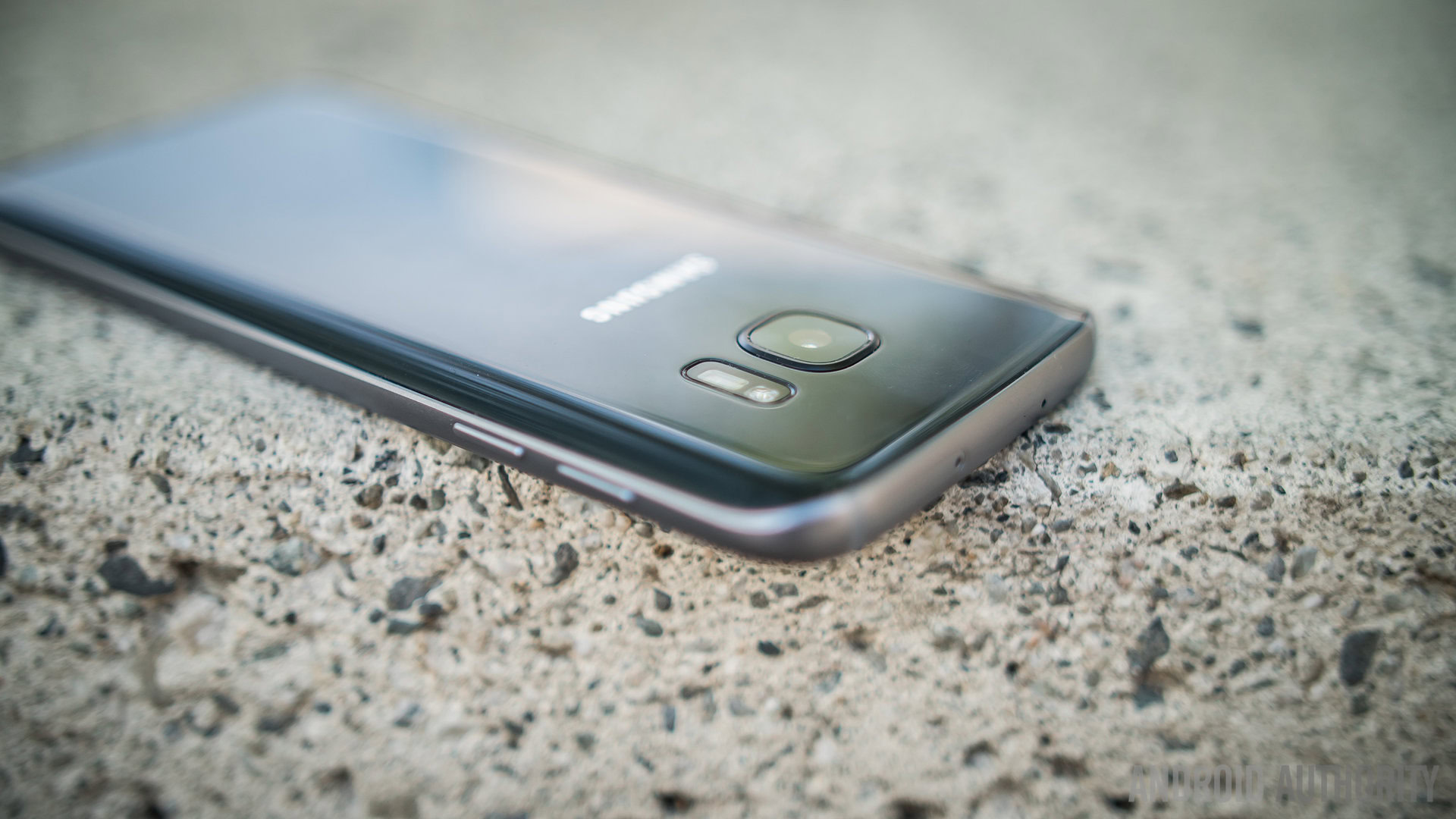
Similarly, researchers at The Australian National University have just created the world’s thinnest lens, one two-thousandth the thickness of a human hair. Single layers of molybdenum disulphide, just 0.7 nanometres thick, were discovered to have remarkable optical properties, which were used to built a 10-micron radius lens. The researchers suggest that this type of lens could be a useful breakthrough for flexible displays and small form factor cameras, but there’s still a lot of development to be done here.

That concludes our little list of upcoming pieces of camera technology that could shake up the smartphone industry, but what is more important is what consumers are actually after. What camera features would you like to see brought to the Android handset market?